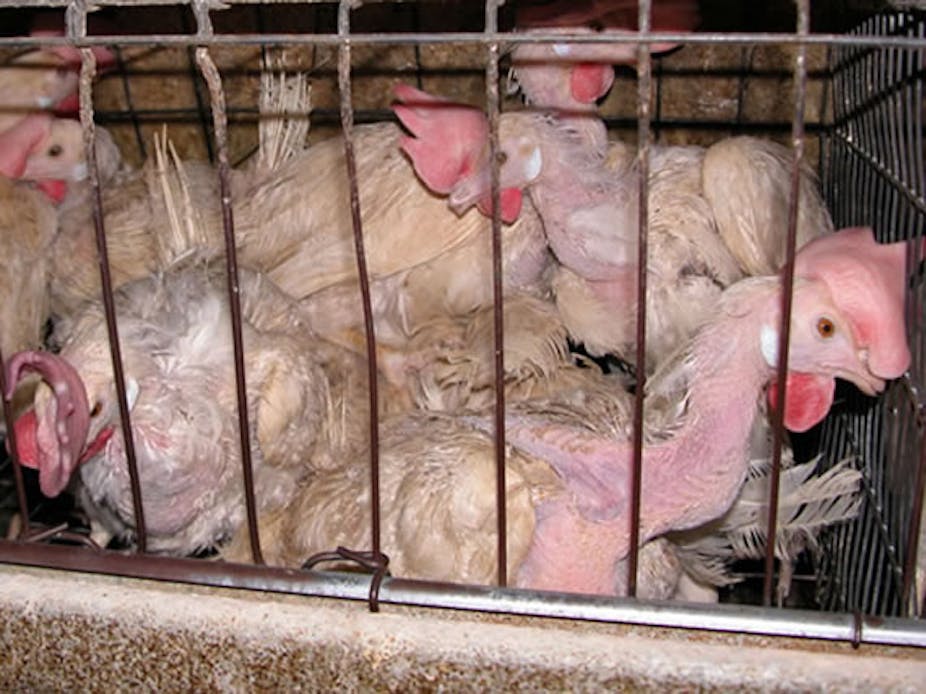Julian Burnside and Daniel Reynolds wrote recently for The Conversation that:
… animals do have greater rights than asylum seekers in Australia. In fact, Australian law requires that animals be treated humanely, yet allows humans to be treated like animals.
We believe there are deep problems with this reasoning, which also unnecessarily risks dividing two important social justice causes.
Animals do not have ‘rights’
Animals do not have “rights” in Australia. Australia’s international human rights obligations impose duties upon states to apply basic protections to human-persons. These include, for example, a right to life, freedom from torture and freedom from arbitrary detention. There are no similar basic protections for animals.
Australia does have long-standing animal welfare laws. Each state and territory in Australia has such laws and that there is a National Animal Welfare Strategy – although the recent federal budget included significant funding cuts to the strategy. It is also true that the strategy makes grand motherhood statements such as that animals under human control should be “healthy, properly fed and comfortable”.
However, the way such statements are translated into practice varies greatly depending on the species of animal in question and how the person controlling the animal makes use of that animal. The life of a racing dog is very different to that of a lap dog, and those differences are reflected in the law.
Think, for example, about animals bred to become food. The floor of a typical factory farm would be enough to reduce even the most hardened human rights lawyer to tears.
Australia’s animal welfare regulatory structure consists of laws, regulations and national codes. In the case of battery hens, the relevant code for commercial egg-laying hens stipulates that modern cages must provide each hen with 550cm2. That is a smaller area than a piece of A4 paper.
If you’re thinking to yourself, “but hens like being highly confined”, think again. The same code allows egg growers to remove hens’ beaks. They do this for one reason: highly confined hens will peck each other to death.
In the case of intensive agriculture, it is not clear if animal welfare protections are there for the benefit of animals or rather serve to codify harmful practice. Certainly, far from granting rights to animals, critics argue that Australia’s animal welfare regulatory framework provides farmers with a defence against harm.
One of the cornerstone rights in the Universal Declaration of Human Rights is the “right to life” (Article 3). Animals in Australia have no such right, quite simply because we kill animals for food. In Australia, for example, we kill approximately 500 million chickens a year, 33 million sheep a year and five million pigs a year.

It is also lawful in Australia to kill the most privileged animals of all, companion animals. In 2010-11, RSPCA NSW killed almost 20,000 unwanted companion animals. Unwanted companion animals are usually killed via lethal injection.
Australia’s treatment of animals that are deemed “pests” can be much more brutal. The commercial kangaroo industry’s national code of practice states that when a female kangaroo is shot her joeys must be killed by a “blow to the head” with a “heavy blunt object”. In other words, the law prescribes that joeys be bludgeoned to death.
We are a very long way from recognising that animals have anything like fundamental “rights” in Australia.
Seek justice for humans and animals
The dehumanising treatment of asylum seekers that is part and parcel of the Australian mandatory detention regime should only remind us that severe violations of human rights actually look a lot like what we routinely do to animals.
Whenever we subject a human to a loss of the right to “life, liberty and security” or subject a human to “cruel, inhuman or degrading treatment”, we should surely be aware that globally billions of animals are exposed to this sort of violence every day in pursuit of food, research output, or simply because some people enjoy hunting or betting on the races.
We believe that understanding what we humans do to animals, the inherent cruelty of current practices, helps us to be better advocates for the rights of both animals and humans.
Strong voices from advocates such as Burnside and Reynolds are needed now more than ever as the Australian government moves to implement an even stricter asylum seeker regime, which very clearly violates basic human rights norms. But we also urgently need voices to advocate for animals, and to do so with the facts in view.

